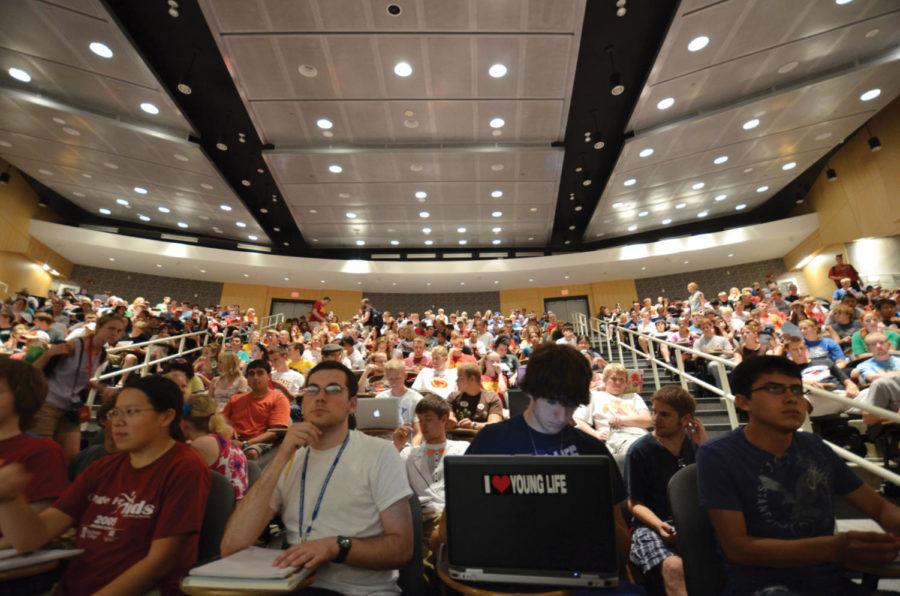Large lectures provide freshmen new experience
Photo: Kaleb Warnock/Iowa State Daily
More than 400 students attend Chemistry 177 in 2055 Hoover Hall on Friday, Aug. 26. This course is one of the largest lectures on campus, and more than 1,000 students are in three different lecture sections.
August 28, 2011
One of the toughest adjustments for freshmen is the intimidating, large-format lecture, in which some students might be in a class with more people than they had in their entire high schools.
“I kind of like it, I guess it seems like a regular class to me,” said Rachel Collingsworth, a freshman in engineering who has three lecture-format courses. She also likes how taking advantage of technology in the classroom helps the class seem smaller, especially the clickers.
“It’s kind of fun to see what everyone else is thinking,” she said. “It seems like a group is doing it, not just me.”
However, Kristine Schluttner, freshman in engineering, does not share her enthusiasm.
“They’re not as personal, and it hasn’t really affected me yet,” Schlutter said when discussing her experience. “I probably wouldn’t get as much out of it as my smaller classes.”
Associate Provost David Holger, though, is confident in ISU professors and believes that the format is not the most important aspect of a course.
“I think the pedagogical design and the way in which a way class is delivered can be more important than the size,” Holger said. “It doesn’t have a major impact on learning, it’s just the changing of the delivery.”
He also emphasized the importance of the role and preparation of the instructors themselves.
Thomas Greenbowe, professor of chemistry, lectures the introductory chemistry course, Chemistry 177, which is one of the largest classes on campus. It contains almost 1,300 students in three lecture sections and employs 42 teaching assistants.
“The way to do well in a course like this is to get to know 10 or 12 students in the class and to get together and ask questions and study together,” Greenbowe said. “It’s tough to go into a large course like this and do it by yourself and not interact with anybody.”
However, he also said this is an opportunity for students to learn to work in groups and develop other skills outside of the classroom, like interpersonal skills, that will be especially useful after graduation.
“This provides an opportunity for them to develop a skill set that companies want. Yes, they’re going to have to know some chemistry, but beyond that, if they can’t work in a group in an interdisciplinary team to get things done, the company isn’t going to hire them.”

















